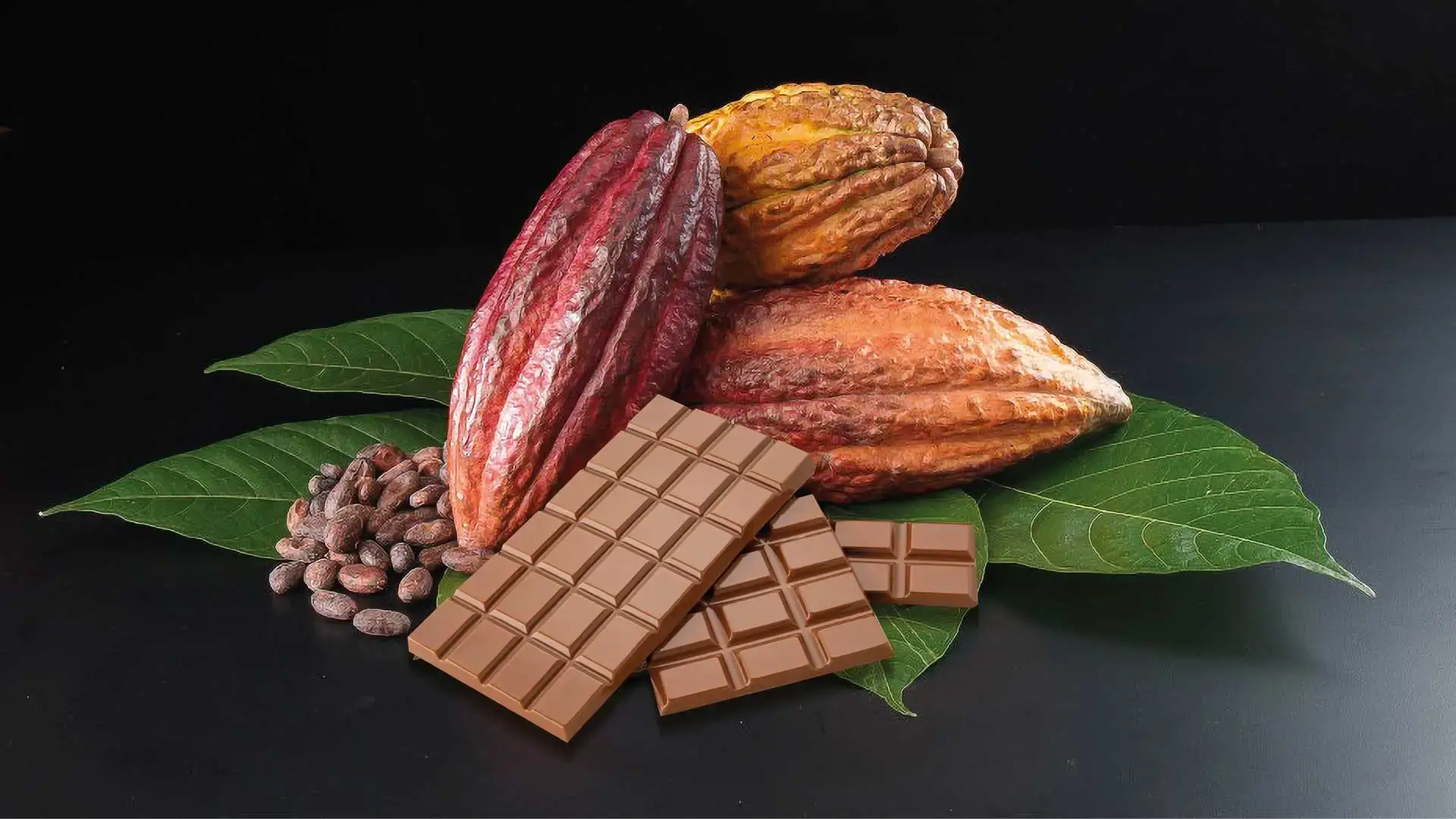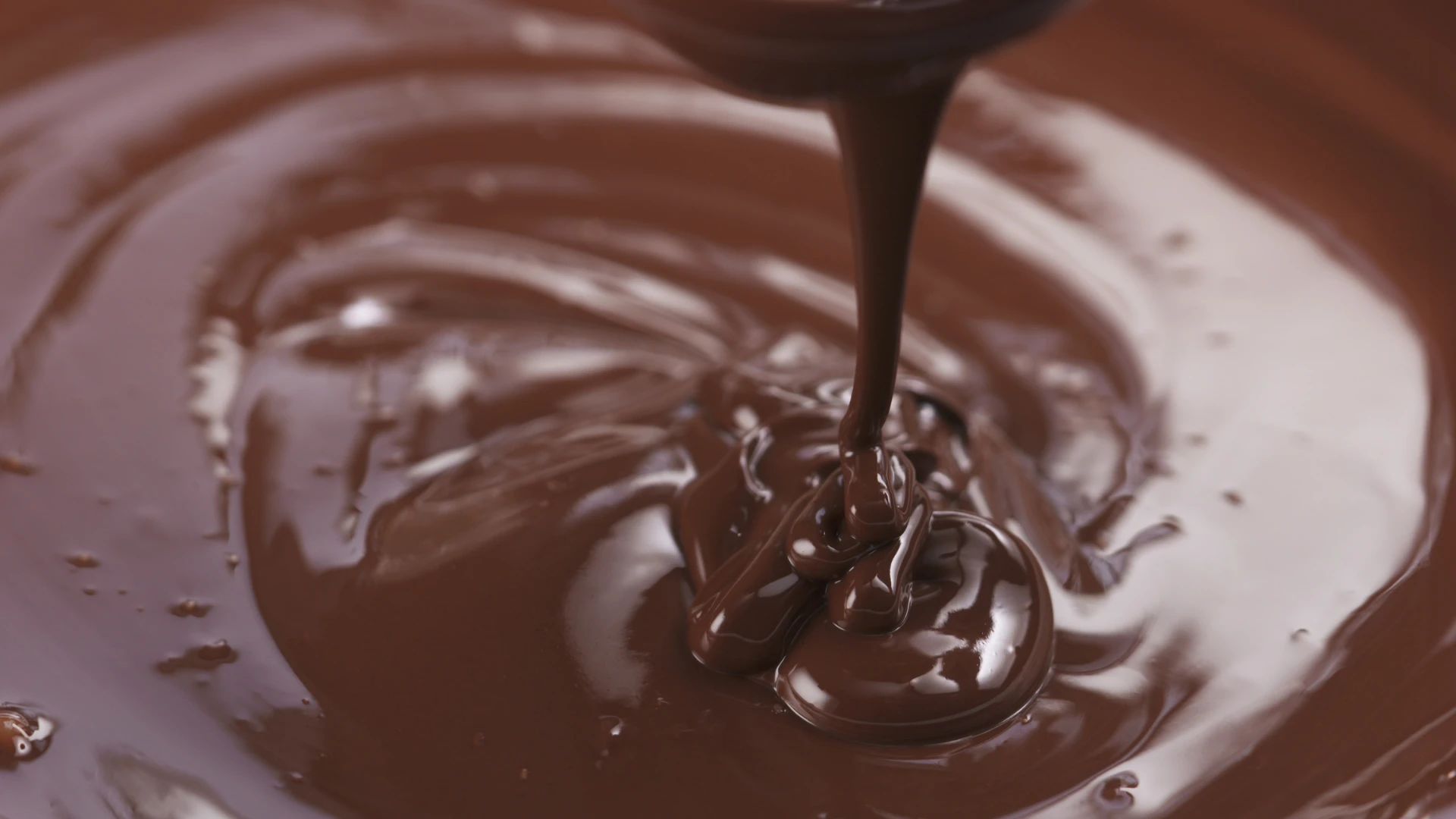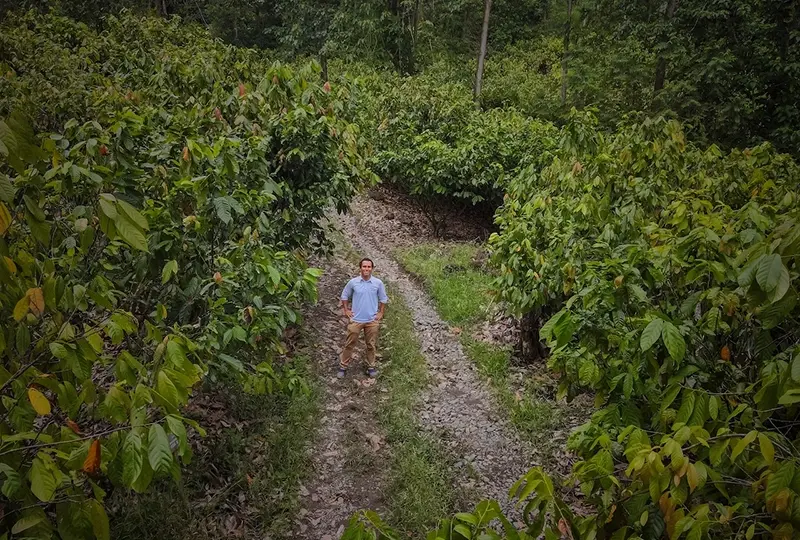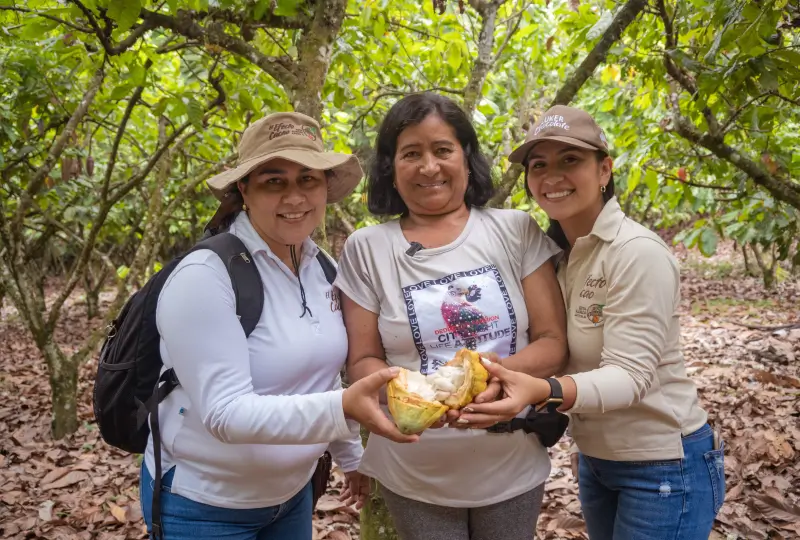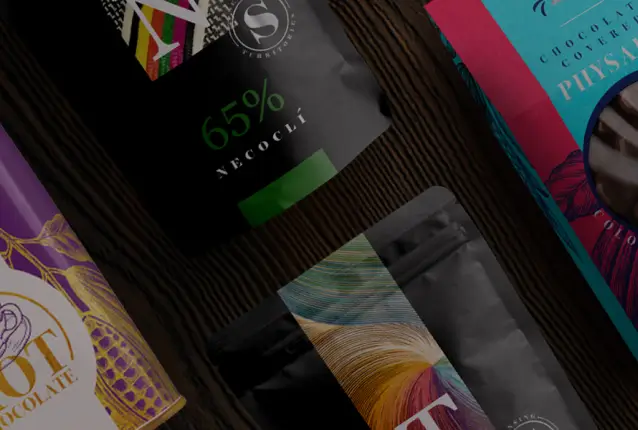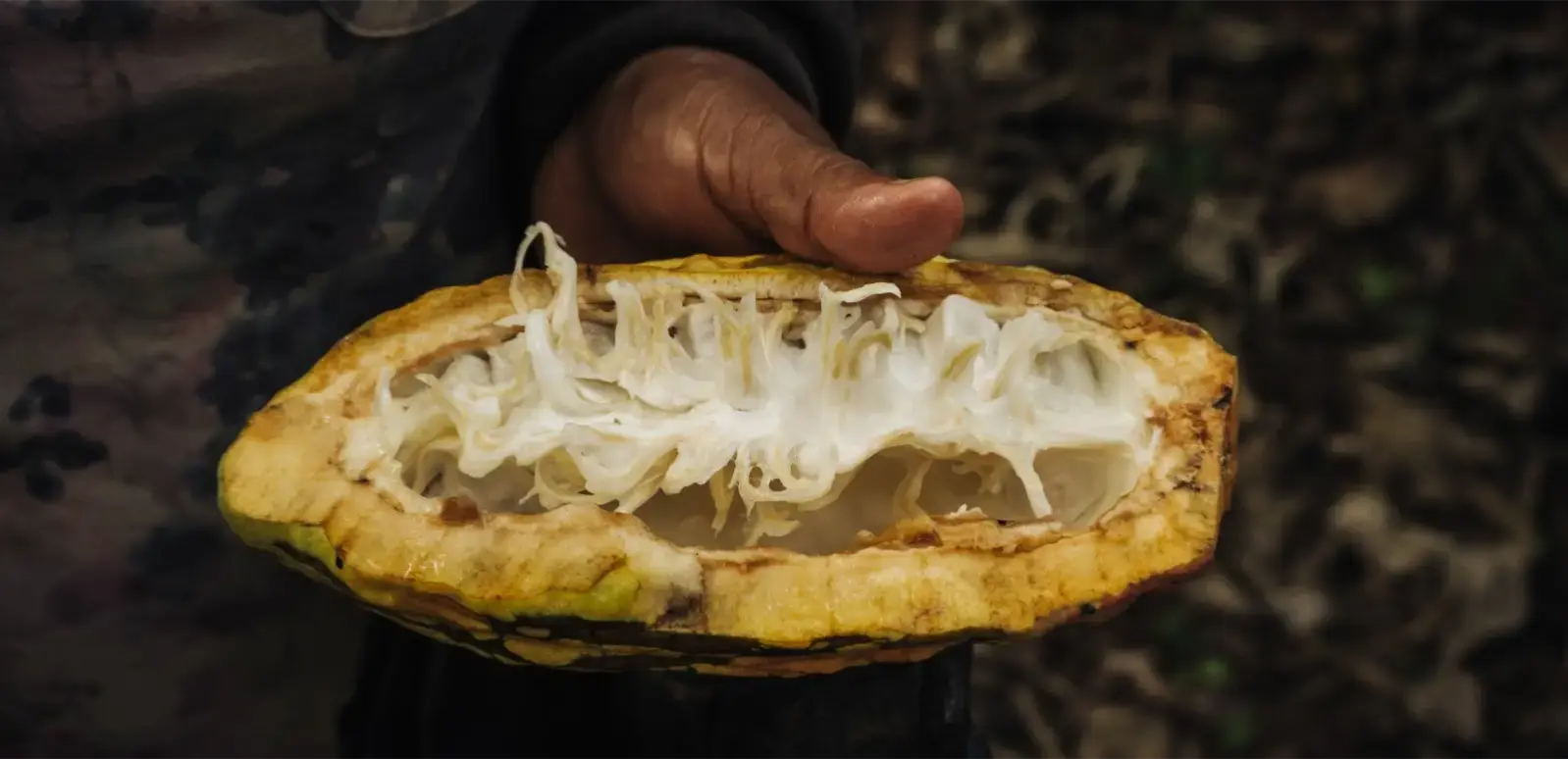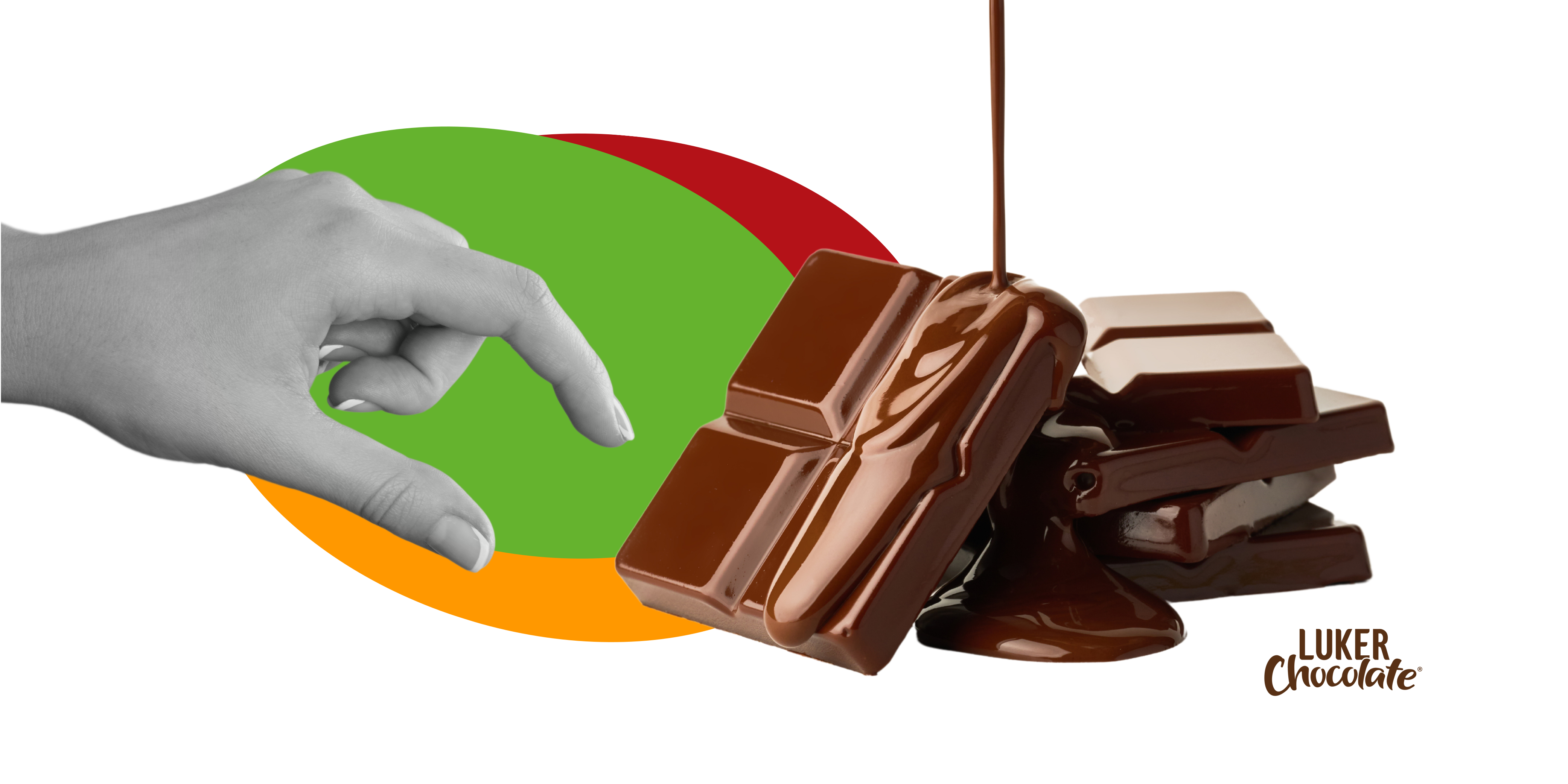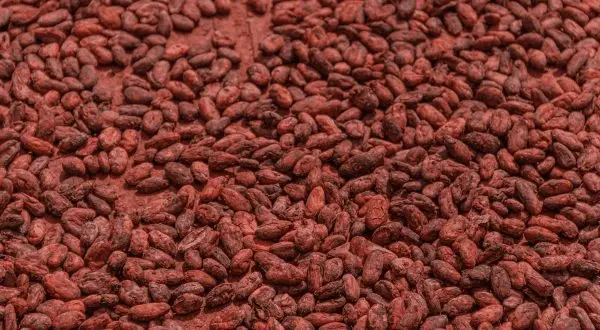These factors have a direct impact on the flavour profile and characteristics of cocoa:"The equation is simple: good crop management coupled with better materials and production processes translates into higher demand and greater consumer satisfaction. By obtaining high-quality cocoa beans, we will obtain exceptional chocolate products, and the farmer will have a higher income and, therefore, a better quality of life”:
- Geographical Origin and Growing Conditions
- Recognising the Quality of Cocoa Beans
- Unifying Sustainability and Supply Chain Management
- Direct Purchase Points to Strengthen Relationships and Ensuring Quality
- Chocolate Sustainability and Traceability: Improving Quality of Life for Cocoa Communities
- Safeguarding Cocoa and Chocolate Quality at Every Step
- Research to Enhance Resistance and Quality
Choosing the right cocoa source comes into the checklist of exceptional chocolate production in confectionery. To achieve the best possible outcome, it's crucial to maintain the quality of cocoa used in premium chocolate products. Each step in the process, is to be executed with precision to create a final product that delights the senses.
| FACT: The global premium chocolate market is expected to expand at a CAGR of 8.54% during the forecast period, reaching USD 19,684.04 million by 2028, according to Market Watch. |
1. Geographical Origin and Growing Conditions
The characteristics of the growing region's soil, climate, and altitude directly impact cocoa's flavour and aroma profile. Some areas recognised for producing high-quality cocoa include countries such as Colombia, Ecuador, Venezuela, Mexico, Costa Rica, and Ghana. Each location offers unique conditions that result in distinctive flavours and aromas.
We produce our chocolate products with Cacao Fino de Aroma, which is distinguished by its exceptional taste, aroma, and texture. This type of cocoa undergoes meticulous processes from planting to harvesting and processing, becoming the soul of premium chocolate. Its complex flavour balances fruity, floral, earthy, and spicy notes, offering an unparalleled sensory experience. Additionally, its silky texture and smooth melt-in-the-mouth mouthfeel add a sense of indulgence and refinement.

A Knowledge-Based Approach to Improving Cocoa Selection
Knowledge is shared not just among teams but also with the cocoa farmers we collaborate with. A significant part of ensuring premium quality chocolate is teaching farmers how to identify and select the highest quality cocoa beans for production.
2. Recognising the Quality of Cocoa Beans
Identifying high-quality cocoa beans involves paying attention to several key aspects:
- Visual Inspection: Premium cocoa beans have a uniform, shiny appearance. The shell is intact, with no breaks or blemishes, and the beans should not be flattened. Their deep, dark colour indicates good ripeness.
- Aroma: High-quality beans emit an intense and distinctive aroma, with notes of fruit, spices, nuts, or flowers.
- Texture: A high-quality bean should feel dry and crisp, breaking easily without leaving a greasy residue. A uniform, crisp texture indicates good fermentation and proper drying.
- Taste: The true indicator of quality lies in the taste. Premium cocoa offers a complex and balanced experience, with notes of fruit, nuts, spices, and a subtle bitterness, leaving a harmonious and long-lasting taste on the palate.

Spoiled cocoa bean
Spoiled cocoa beans are unsuitable for chocolate production because spoilage significantly impacts the beans' flavour, aroma, and safety. Spoiled beans can harbour mould or bacteria, introducing harmful toxins and off-flavours that render the beans unfit for consumption and compromise the quality of any chocolate made from them.

Germinated cocoa bean
Germinated cocoa beans trigger the breakdown of stored proteins, fats, and carbohydrates, altering the flavour potential and ruining the bean's ability to be processed into chocolate.

Fully purpled cocoa bean
Fully purpled cocoa beans are generally considered under-fermented. Proper fermentation is critical to developing complex flavours in chocolate. Under-fermentation leaves the beans with a raw, astringent, and often bitter flavour, making them unsuitable for producing quality chocolate.

Mouldy cocoa bean
Mouldy cocoa beans are unsuitable for chocolate production because mould introduces harmful toxins and unpleasant flavours that compromise the quality and safety of the final product. Mould growth can also negatively affect the fermentation and drying processes, further impacting flavour development and rendering the beans unfit for consumption.
Through shared knowledge, we empower the farmers to make better decisions that directly impact their yields and, in turn, the chocolate we create. By improving the consistency and quality of their crops, we ensure that our final products maintain their premium standards.

Well fermented cocoa bean
Controlled fermentation and proper drying are crucial, as they form flavor compounds and eliminate undesirable flavors. "Fermentation is a crucial stage, as this is where the chocolate flavor and aroma precursors are generated. This process should take between 6 and 8 days, depending on the region. If the bean is not treated with careful and controlled post-harvesting criteria, it cannot be corrected in the process no matter how much technology we put in," says Castillo.
3. Sustainability and Supply Chain Management: A Unified Approach
An integration of supply chain management with sustainability ensures that every step in the value chain meets our stringent environmental and social standards. By keeping an eye on both the source of our ingredients and the impact of their production, we guarantee that the quality of cocoa and environmental responsibility are always aligned.
This is why we unified the sourcing and the sustainability areas with Julia Ocampo as our VP of sourcing and sustainability, leading a team of 25 members, all working in different regions across the country, directly with cocoa farmers, associations, and communities.
Their main purpose is to maintain a supply of cocoa while ensuring best practice when talking about sustainability and quality. This integration means the product, the environment, and the communities are taken into account as a whole.
4. Direct Purchase Points: Strengthening Relationships and Ensuring Quality
Direct purchase points in various regions allow closer, more controlled access to the finest cocoa beans. This not only ensures the quality of the final product but also strengthens relationships with the farmers and optimises traceability.
|
📝At Luker, we prioritize ensuring that farmers receive a substantial portion of the cocoa market price. Between 2022 and 2023, we paid 94% of the New York Stock Exchange (Free on Board – FOB) price for cacao, which included bonuses for quality and sensory attributes, directly benefiting our suppliers. We’ve maintained this commitment throughout 2024, actively collaborating with farmers to help them capitalize on higher market prices. For comparison, GlobalData reports that Ivorian and Ghanaian farmers received an average of 53% and 49%, respectively, during the same time frame. In April, the average New York LON Futures price for farmers stood at $9,877, while those in Ghana and Ivory Coast were paid an average of $2,173. Luker, on the other hand, offered an average of $8,025. This rise in income has had a positive impact on farmers' livelihoods, enabling them to reinvest in their farms with better infrastructure, fertilization, and crop care. These improvements not only enhance future harvests but also contribute to a more secure cocoa supply in the years ahead. Our approach goes beyond just fair pricing. We engage farmers in weekly purchasing agreements, providing them with a steady and predictable income that allows for better production planning. This consistency is particularly vital in fluctuating markets, ensuring farmers can invest in their farms and remain resilient when prices drop, safeguarding their livelihoods during volatile periods. |
Through fair price transfers, not only the quality of the product but also the quality of life for the farmers is impacted. Cocoa communities can invest in their crops, improving the quality of their cocoa and increasing their income.

This investment enhances the quality of life for cocoa farming families, boosts the local economy, and promotes sustainable agricultural practices.
5. Shared Value: Improving Quality of Life for Cocoa Communities
Harvard Business Review defines CSV as "policies and operating practices that enhance a company's competitiveness while simultaneously improving the economic and social conditions of the communities in which it operates."
Shared value means more than just providing premium chocolate. It means empowering the cocoa-growing communities that help make it possible. We integrate Creating Shared Value (CSV) into our sustainability plan, The Chocolate Dream.

In simple terms, it means ensuring that our work with cocoa producers in growing regions is mutually beneficial. Shared value is created in three key ways: reimagining products and markets, improving productivity across the value chain, and fostering local cluster development.
Going beyond traditional sustainability, our creating shared value at origin approach is a business model that retains capital and value within the country of origin, allowing us to reinvest directly into Colombian communities.
6. Cocoa & Chocolate Supply Chain: Safeguarding Quality at Every Step
The entire cocoa value chain plays a crucial role in ensuring the quality of a good bean, and traceability has a notable impact. Controlling the origin of cocoa and its journey from cultivation to processing allows us to know the source of the cocoa and provide valuable information on the agricultural practices used, ensuring that quality standards are met and establishing a relationship of trust with cocoa producers.
>Read more about quality testing in chocolate manufacturing<
The best quality beans are produced by dedicated farmers who have perfected the art of cocoa cultivation. Experts’ support by sharing research-based knowledge on the best agricultural practices to achieve exceptional beans with unique aromas and flavour profiles is fundamental.
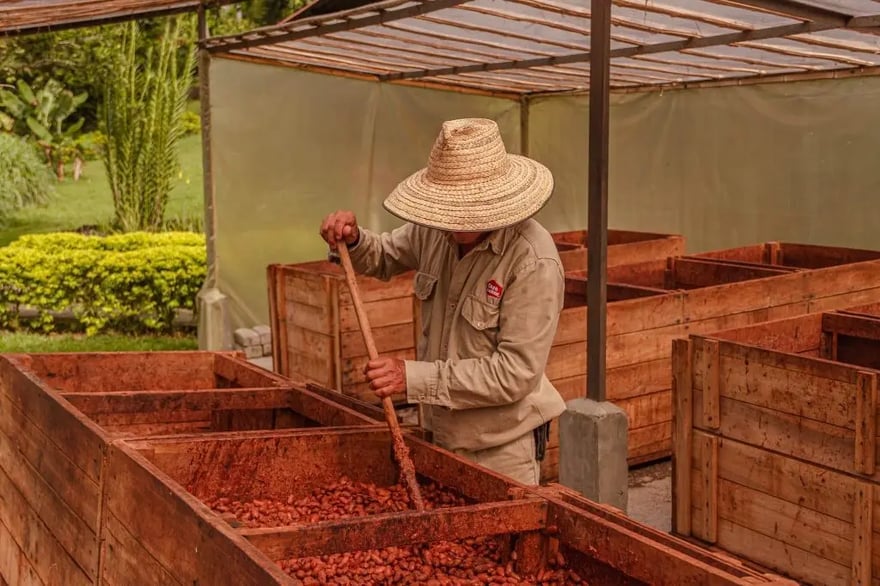
Growing and post-harvesting cocoa plays a fundamental role. Careful attention to every stage, from pruning the trees to fermenting and drying the beans, is essential to developing optimal flavours and aromas. Expert farmers use traditional and modern techniques to ensure that cocoa reaches its full potential.
A cocoa bean with too much moisture is susceptible to fungus, mould, and other diseases, so after fermentation, beans should be dried to reduce moisture from 60% to 7.5%. This step ensures the stability and longevity of the beans while locking in their distinctive flavours. Proper drying techniques, including appropriate airflow, temperature, and duration, are employed to avoid off-flavours or spoilage.
Additionally, storing the beans in a cool, dark place is crucial to prevent the deterioration of flavour and aroma. If this process isn't correct, it can result in a bitter and astringent taste and slaty beans.
Although cultivating and processing cocoa beans are crucial for great-tasting chocolate, transportation also plays an essential role. The journey of cocoa beans to our chocolate plant requires careful shipping to maintain their quality and preserve their flavours. However, it is often in this overlooked stage that flavour can be at risk.
One essential but underestimated aspect of this process is the cleanliness of the trucks used for transport. It is critical to ensure these vehicles are thoroughly cleaned and free of dirt, gasoline residues, or lingering smells that could affect the cocoa beans. Even the slightest contamination can affect the beans' flavour profile and compromise the final product.
We control our entire value chain so that the cocoa beans do not contain critical defects such as those associated with pests, bad fermentation, contamination, or impurities. We separate defective beans before they reach the manufacturing process to ensure the sensory profile of our chocolates. Our Cocoa Sourcing Team is adequately trained to recognise a quality bean. They know when a bean is slaty, infested, or insufficiently fermented and have special equipment and technology to perform this check.
7. Research at the Farm Level: Enhancing Resistance and Quality
Conducting farm-level research and sharing insights with the farmers to improve resistance to pests and diseases, ensures a higher quality final product. This research and development approach helps farmers adopt more resilient and sustainable practices for their cocoa crops.

In 1962, La Granja Luker was founded. La Granja Luker is a research and training centre dedicated to supporting various cacao farmer associations in modernizing their agricultural practices and enhancing productivity, ultimately improving their quality of life. Additionally, small producers receive a 20% subsidy on plant material for new projects or replanting efforts. This enables them to upgrade their crops with high-quality Cacao Fino de Aroma varieties that increase productivity.
Farmers also benefit from the expertise of Luker Chocolate’s team of agronomists, who provide on-the-ground technical assistance throughout Colombia.
Building a Better Future for Chocolate
A commitment to excellence goes beyond producing premium chocolate—creating shared value at the origin. By supporting sustainable practices, ensuring traceability, and upholding our Triple-Impact Vision, we ensure that every piece of chocolate we produce reflects the highest standards of quality, ethics, and sustainability. Join us on this journey, and let’s create a world where the finest chocolate is made with care, integrity, and respect for the environment and the people who produce it.
